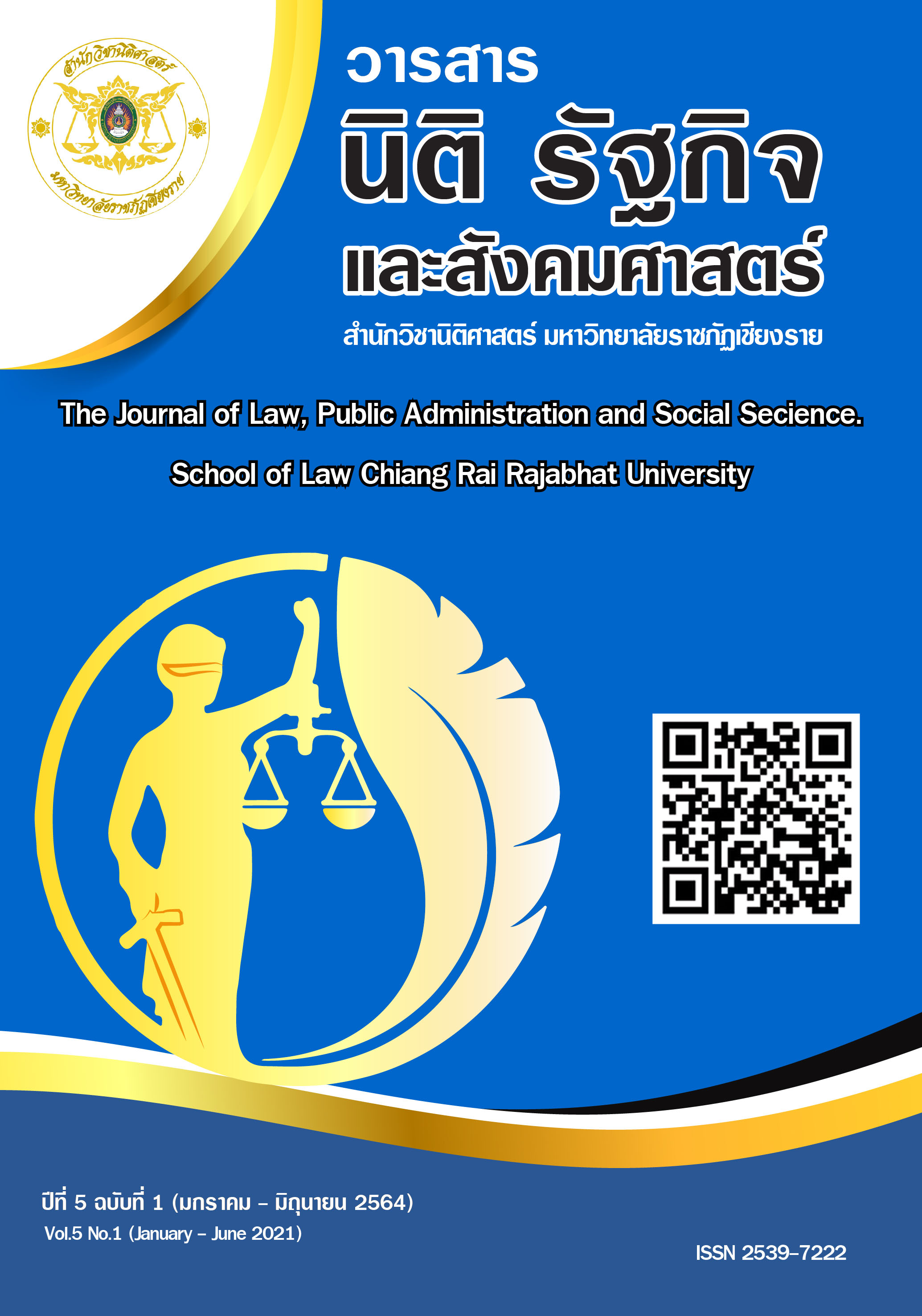Copyright Protection on AI-Generated Work : The Case Study of the US, UK, and Thailand Copyright Laws
Main Article Content
Abstract
With the advance of AI technology, artificial intelligent machines nowadays can originate creative works without human’s involvement. Not as a tool of human like technologies in former age, can AI-generated work be protected under the current law regime in Thailand comparing to the US and UK?
Through the comparative study of the copyright laws in the three countries, though they are living under the same umbrella of international copyright legal framework, their copyright provisions are different in detail especially on the provisions related to authorship, originality, creativity, and copyright ownership. While Thailand clearly states in its provision that “author” requires to be human, the other two jurisdictions are silent on this part. This thus causes ambiguity in its interpretation and demonstrates their inadequacy in providing copyright protection to the work generated by AI.
To solve the problem, in the midst of proliferation of the use of AI in various industries, Thailand is in need to amend its copyright law to sufficiently protect AI-generated works. One of its options is the application of Fictional Human Author theory and Work Made for Hire doctrine. This is with note that such revision shall also be consistent with the objective of intellectual property law stated in TRIPS.
Article Details
References
Bridy, Annemarie. “Coding Creativity: Copyright and the Artificially Intelligent Author.” Stanford Technology Law Review 5 (2012): 1-28.
Copyright Act of 1976. Public Law 94-553. U.S. Statutes at Large 90 (1976): 2541.
Copyright, Designs and Patents Act of 1988. U.K. 1988 c. 48.
Davies, Colin. “An Evolutionary Step in Intellectual Property Rights – Artificial Intelligence and Intellectual Property.” Computer Law & Security Review 27 (December 1, 2011): 601-619.
Dorotheou, Emily. “Reap the Benefits and Avoid the Legal Uncertainty: Who Owns the Creations of Artificial Intelligence?.” Computer and Telecommunications Law Review 4 (May 29, 2015): 85-93.
Guadamuz, Andres. “Do Androids Dream of Electric Copyright? Comparative Analysis of Originality in Artificial Intelligence Generated Works.” Intellectual Property Quarterly 2 (2017): 168-186.
Miller, Arthur. “Copyright Protection for Computer Programs, Database, and Computer-Generated Works: Is Anything New Since CONTU?.” Harvard Law Review 106 (March, 1993): 977-1073.
Wu, Andrew. “From Video Games to Artificially Intelligence: Assigning Copyright Ownership to Works Generated by Increasing Sophisticated Computer Programs.” AIPLA Quarterly Journal 25 (1997): 131-178.
Yanisky-Ravid, Shlomit. “Generating Rembrandt: Artificial Intelligence, Copyright, and Accountability in the 3A Era—The Human-Like Authors Are Already Here—A New Model.” Michigan State Law Review 4 (2017): 659-726.
ดารพุธ ศรีธรรมวุฒิ. “งานอันมีลิขสิทธิ์ที่เกี่ยวข้องกับสัตว์.” วิทยานิพนธ์ปริญญามหาบัณฑิต คณะนิติศาสตร์ มหาวิทยาลัยกรุงเทพ, 2557. DSpace. http://dspace.bu.ac.th/jspui/bitstream/123456789/1818/3/daraput.srit.pdf, สืบค้น 20 มิถุนายน 2563.
ธัชชัย ศุภผลศิริ. กฎหมายลิขสิทธิ์. พิมพ์ครั้งที่ 3. กรุงเทพฯ: นิติธรรม, 2544.
พระราชบัญญัติลิขสิทธิ์ 2537. ราชกิจจานุเบกษา ฉบับกฤษฎีกา เล่มที่ 111 ตอนที่ 59 ก (21 ธันวาคม 2537): 1.


